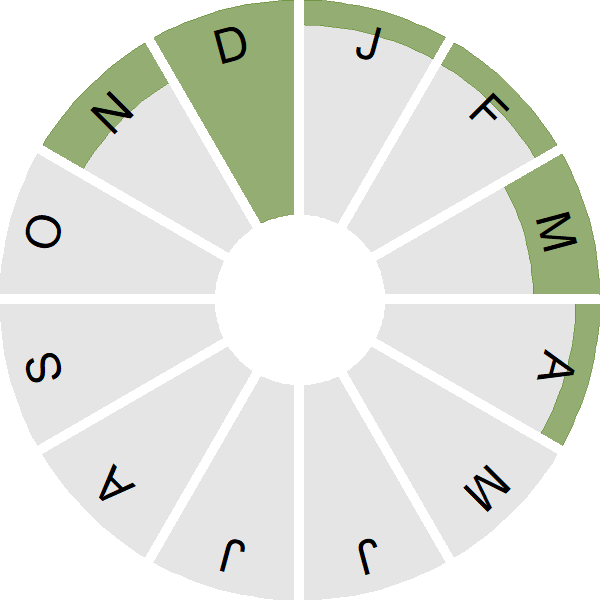Belted Kingfisher
Introduction
Much larger than our Kingfisher this extremely rare visitor from North America has a grey (male) or russet (female) breast band.
Like our Kingfisher, the Belted Kingfisher nests in a burrow it excavates in a riverbank; this may be up to 2.5 m in length.
Key Stats
Status and Trends
Conservation Status
Population Size
Population Change
Population trends of this scarce species are not routinely monitored.
Distribution
This vagrant is too rarely reported to map distribution.
Distribution Change
This vagrant is too rarely reported to map distribution change.
Seasonality
Belted Kingfisher is an extremely rare vagrant; these records are relate to one elusive but long-staying individual.
Weekly pattern of occurrence
The graph shows when the species is present in the UK, with taller bars indicating a higher likelihood of encountering the species in appropriate regions and habitats.

Movement
Britain & Ireland movement
Biology
Survival and Longevity
Survival is shown as the proportion of birds surviving from one year to the next and is derived from bird ringing data. It can also be used to estimate how long birds typically live.
Classification, names and codes
Classification and Codes
- Order: Coraciiformes
- Family: Alcedinidae
- Scientific name: Megaceryle alcyon
- Authority: Linnaeus, 1758
- BTO 5-letter code: BELKI
- Euring code number: 8340
Alternate species names
- Catalan: alció gegant nord-americà
- Czech: rybarík pruhoprsý
- Danish: Bæltestødfisker
- Dutch: Bandijsvogel
- Estonian: põhja-kuningkalur
- Finnish: sepelkalastaja
- French: Martin-pêcheur d’Amérique
- German: Gürtelfischer
- Hungarian: örvös halkapó
- Icelandic: Beltaþyrill
- Irish: Cruidín Creasa
- Italian: Martin pescatore americano
- Latvian: pelekais dzenitis
- Lithuanian: baltapilvis keršasis tulžys
- Norwegian: Belteisfugl
- Polish: rybaczek popielaty
- Portuguese: guarda-rios-cintado
- Slovak: rybárec modrosivý
- Slovenian: kraljevi pasat
- Spanish: Martín gigante norteamericano
- Swedish: bälteskungsfiskare

